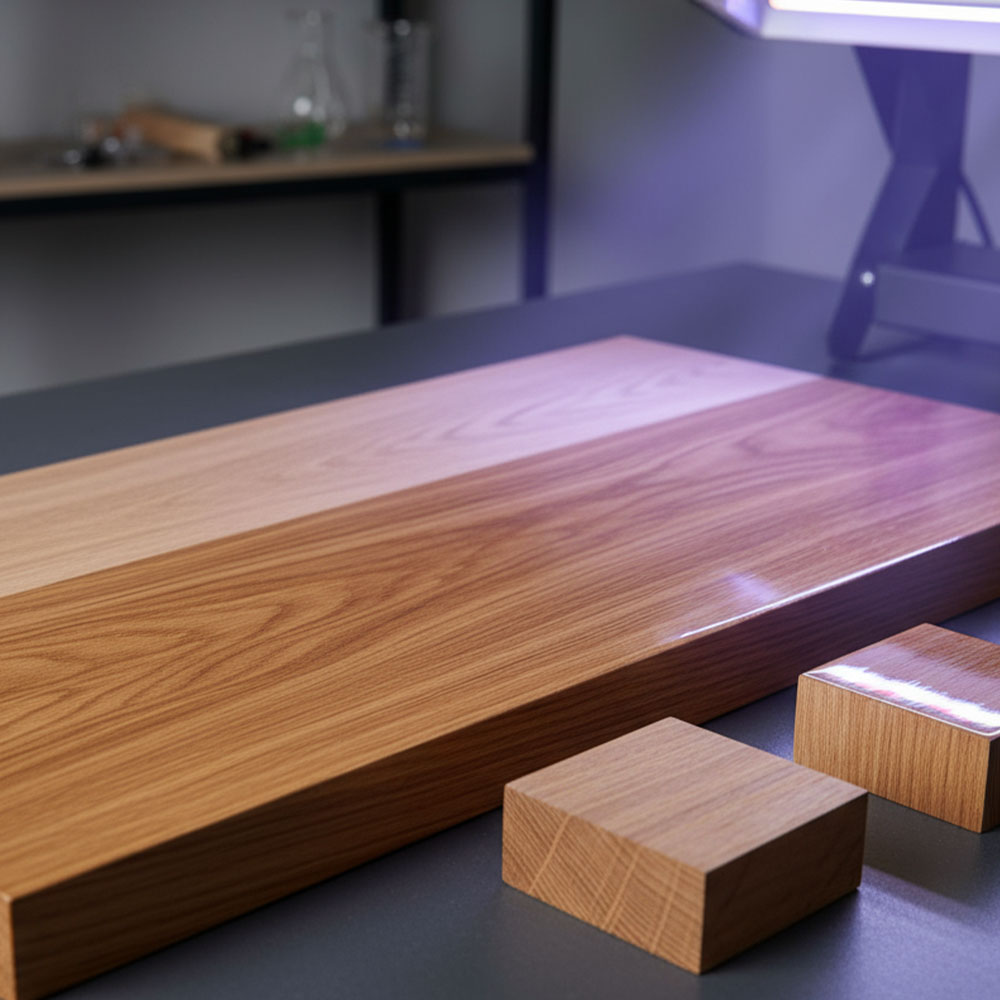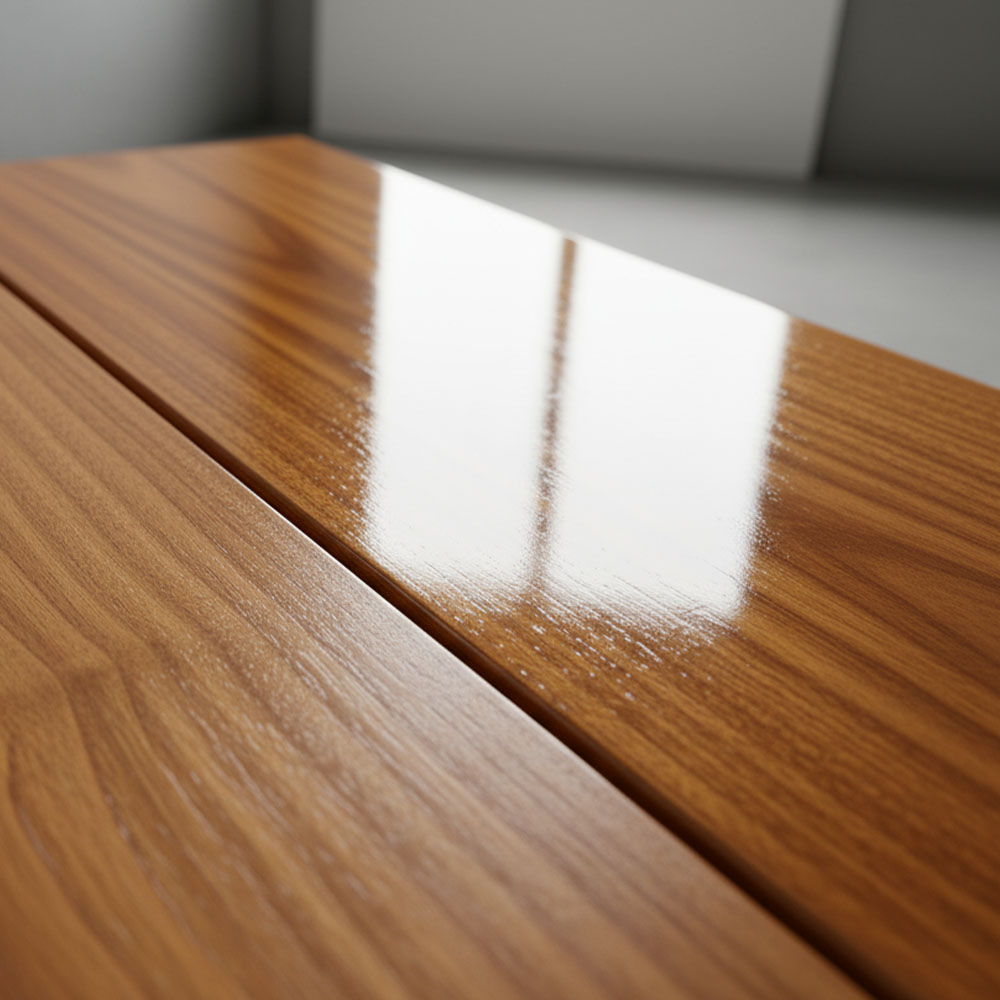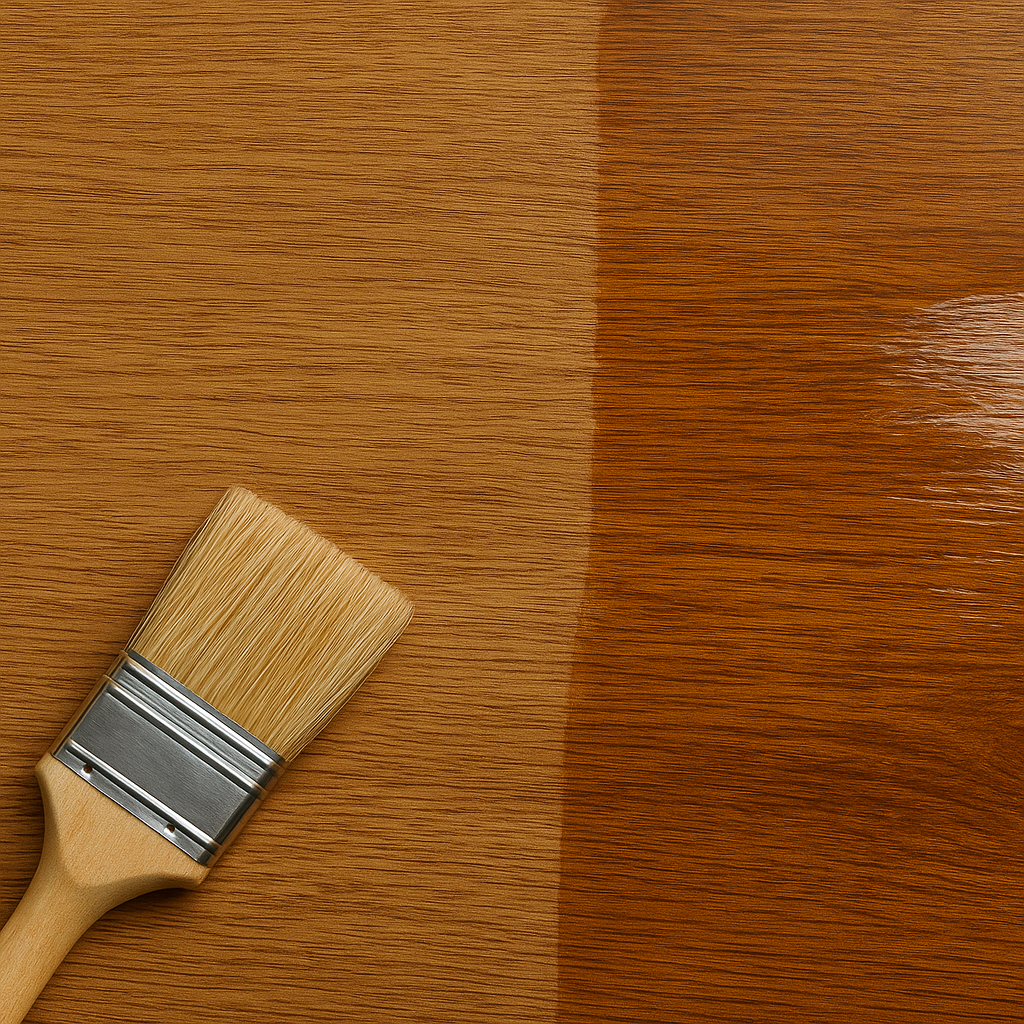In today’s industrial and commercial production, surface finishing plays a crucial role in both performance and appearance. Among modern coating technologies, UV varnish and UV lacquer are gaining increasing attention for their durability, speed, and visual impact. Compared with water-based varnish, UV coatings offer faster curing, higher resistance, and a distinctive glossy finish.
This article explores the main differences between water-based varnish and UV varnish, highlighting the advantages, applications, and future potential of UV coating technology.
What Are UV Varnish and UV Lacquer?
UV varnish and UV lacquer are coatings that harden instantly when exposed to ultraviolet light. This curing process produces a tough, smooth, and glossy surface layer. Unlike traditional air-drying or heat-curing methods, UV curing takes only seconds, dramatically improving production efficiency.
Comparing Water-Based Varnish and UV Varnish
-
Curing Method:
Water-based varnish relies on evaporation, which can take hours. UV varnish, in contrast, cures instantly under UV light.
-
Durability:
UV coatings offer higher resistance to scratches, chemicals, and wear, making them ideal for furniture, automotive interiors, and printed materials.
-
Environmental Impact:
Both types are more eco-friendly than solvent-based coatings. However, UV varnish often contains little to no solvent, giving it a slight advantage in sustainability.
-
Appearance:
UV coatings produce a more pronounced gloss and smoother texture, while water-based finishes tend to deliver a softer, more natural look.
Key Advantages of UV Varnish and UV Lacquer
-
Rapid Drying Time: Instant curing accelerates production and reduces downtime.
-
High Durability: Strong resistance to abrasion, chemicals, and environmental wear.
-
Energy Efficiency: UV curing consumes less energy than heat or air drying.
-
Enhanced Aesthetic Appeal: Creates a deep, mirror-like gloss that enhances the perceived quality of finished products.
-
Eco-Friendly Formulation: Low or no solvent content supports sustainable manufacturing.
Industrial Applications
UV varnish and lacquer are now used across multiple industries:
-
Furniture: High-gloss surfaces resistant to daily wear.
-
Automotive: Durable coatings for interior and exterior components.
-
Advertising and Printing: Premium finishes on posters, catalogs, and packaging.
-
Electronics: Scratch-resistant protective layers for devices and displays.
The Future of UV Coating Technology
As industries move toward sustainability and efficiency, UV varnish is expected to replace many traditional finishing methods. Its combination of speed, strength, and aesthetics makes it a leading technology for next-generation surface treatment.
Conclusion
In the debate of water-based varnish vs UV varnish, UV technology clearly leads in curing speed, surface hardness, and visual quality. With ongoing improvements in formulation and equipment, UV coatings are set to become the new standard for durable, eco-friendly, and visually striking finishes across industrial sectors.


